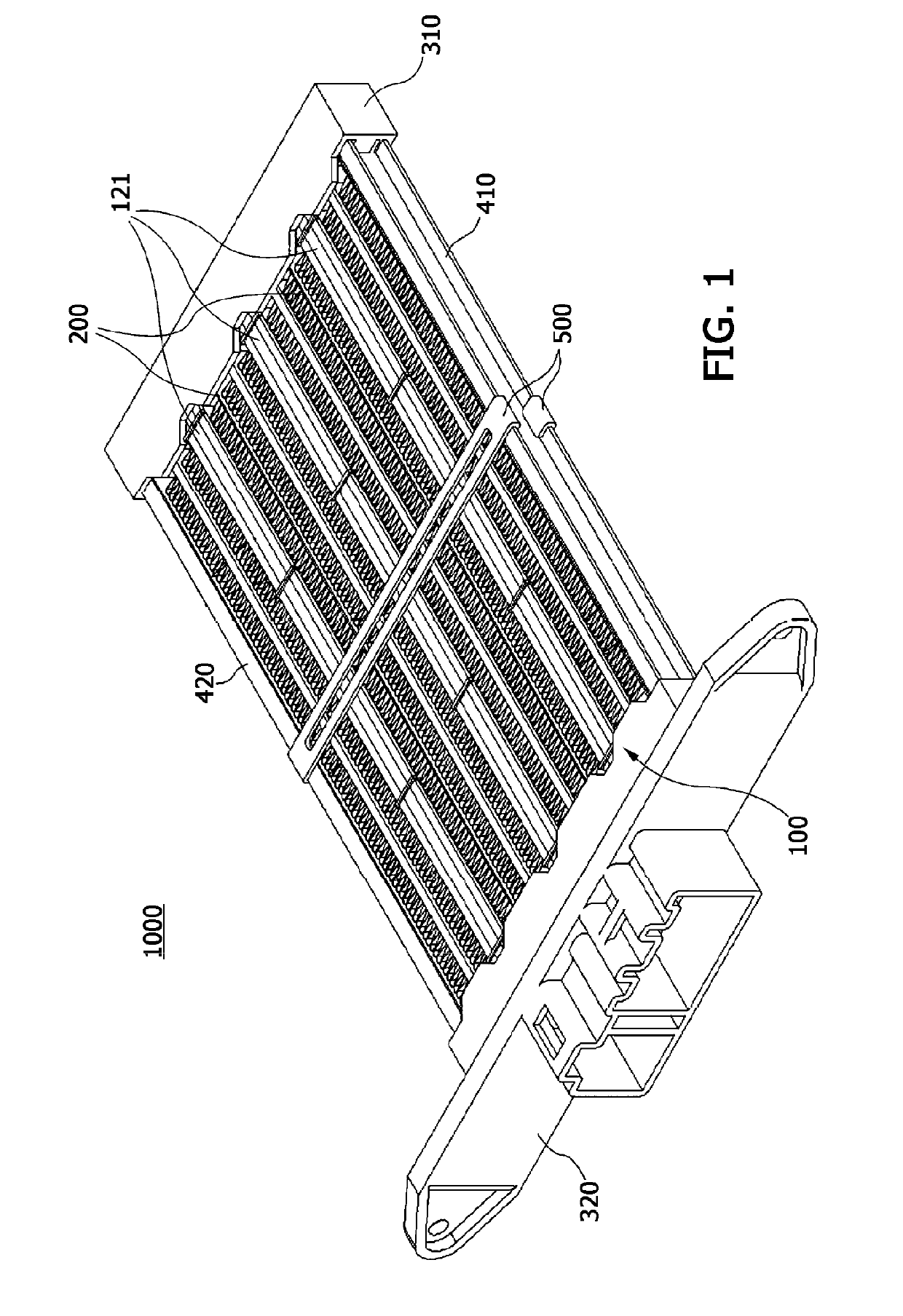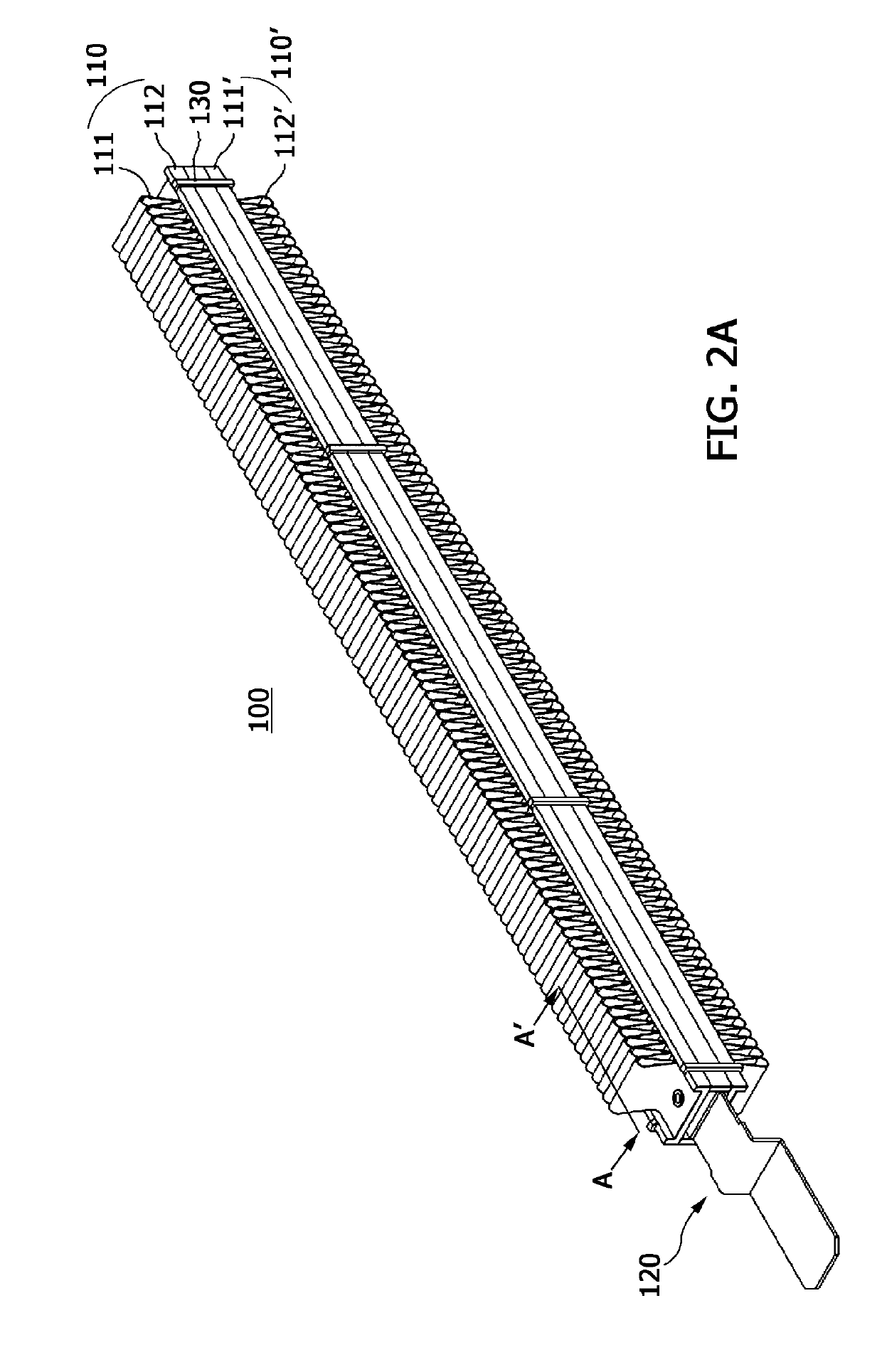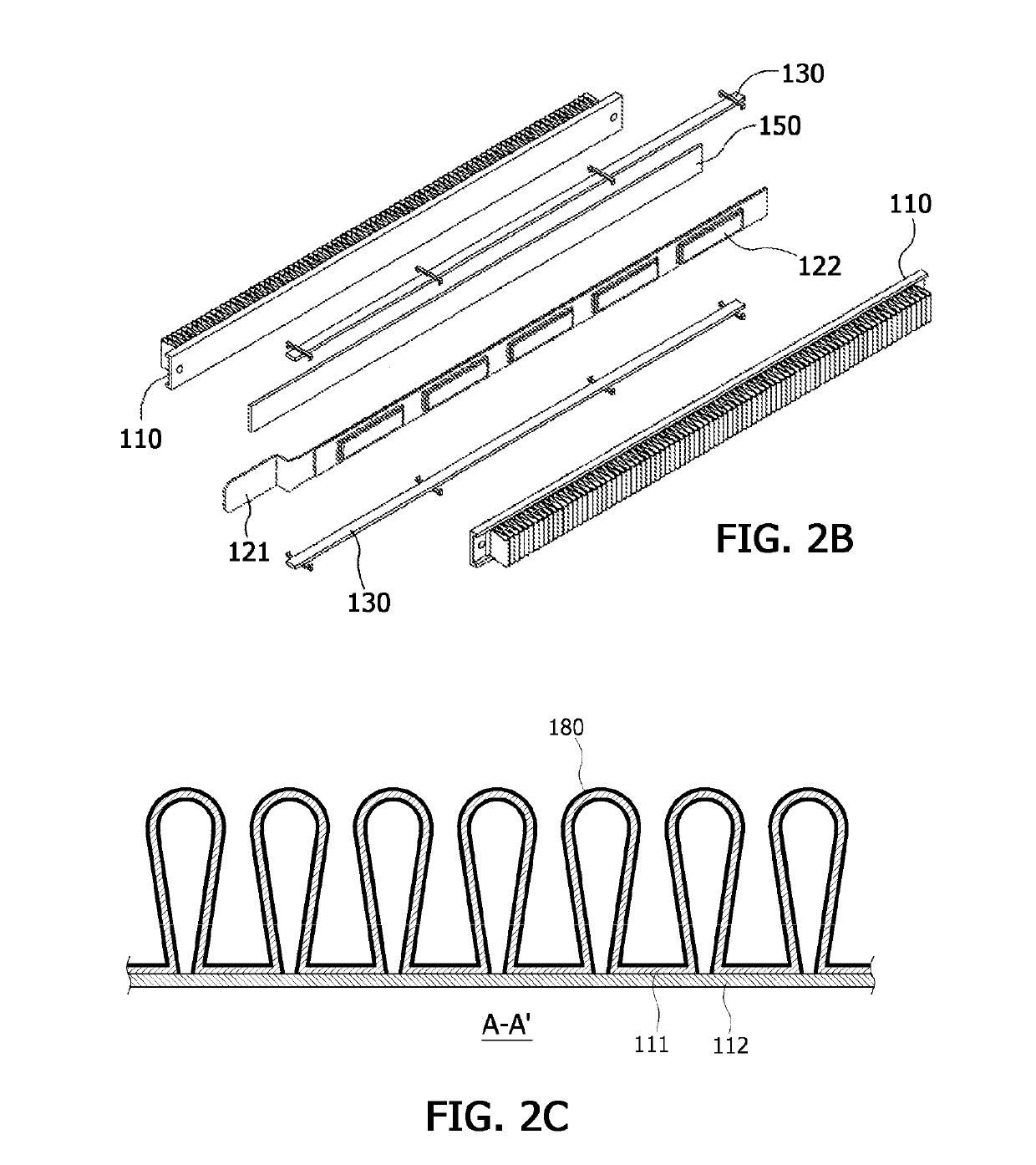PTC unit for vehicle heater, PTC heater including the same, and air conditioning device for vehicle
- Summary
- Abstract
- Description
- Claims
- Application Information
AI Technical Summary
Benefits of technology
Problems solved by technology
Method used
Image
Examples
example 1
[0116]First, in order to prepare an insulating heat radiation coating composition, a coating layer-forming component was prepared as follows: 60 parts by weight of a curing agent including a polyethylene polyamine as a first curing agent and 2,4,6-tris[N,N-dimethylamino]methyl]phenol as a second curing agent in a weight ratio of 1:1, 47 parts by weight of silicon carbide having an average particle diameter of 5 μm and a D50 to D97 ratio of 1:1.6, 3 parts by weight of an epoxy-based silane compound as a physical property-improving component (Tech-7130 manufactured by Shanghai Tech Polymer Technology), 44 parts by weight of talc as a colorant, 44 parts by weight of titanium dioxide as a quencher, 22 parts by weight of trizinc bis(orthophosphate) as a flame retardant, 0.5 part by weight of 2-(2′-hydroxy-3,5′-di(1,1-dimethylbenzyl-phenyl)-benzotriazole as a UV stabilizer, 1 part by weight of 2-hydroxyphenyl benzothiazole as an antioxidant, 5 parts by weight of a condensate of isobutylal...
examples 2 to 23
[0119]Insulating heat radiation compositions were prepared in the same manner as in Example 1, except that an average particle diameter and a particle size distribution of an insulating heat radiation filler, a weight ratio of curing agents, a molecular weight of a main resin, and the like were changed as shown in Table 1, Table 2, Table 3, and Table 4. Heat radiation parts were prepared by using the insulating heat radiation compositions. PTC units for a vehicle heater as shown in Table 1, Table 2, Table 3, and Table 4 were manufactured using the heat radiation parts.
experimental example 1
[0121]The following physical properties of heat radiation parts of the PTC units for the vehicle heater manufactured in Examples and Comparative Example were evaluated and shown in Tables 1 to 4.
[0122]1. Evaluation of Thermal Conductivity
[0123]A heat radiation part was placed at a center of a 32-by-30-by-30-cm acrylic chamber, and then, a temperature inside the chamber and a temperature of the heat radiation part were adjusted to 25±0.2° C. Then, a 20-by-20-mm light-emitting diode (LED) as a heat source was attached to the heat radiation part by using a thermal conductive tape (TIM: 1 W / mk) to prepare a test specimen. Input power of 2.1 W (DC 3.9 V and 0.53 A) was applied to the heat source of the prepared test specimen to generate heat. After the test specimen was maintained for 90 minutes, a temperature of the heat radiation part was measured to evaluate thermal conductivity of the heat radiation part. Specifically, thermal conductivity of a heat radiation base material not includ...
PUM
 Login to View More
Login to View More Abstract
Description
Claims
Application Information
 Login to View More
Login to View More - R&D
- Intellectual Property
- Life Sciences
- Materials
- Tech Scout
- Unparalleled Data Quality
- Higher Quality Content
- 60% Fewer Hallucinations
Browse by: Latest US Patents, China's latest patents, Technical Efficacy Thesaurus, Application Domain, Technology Topic, Popular Technical Reports.
© 2025 PatSnap. All rights reserved.Legal|Privacy policy|Modern Slavery Act Transparency Statement|Sitemap|About US| Contact US: help@patsnap.com



